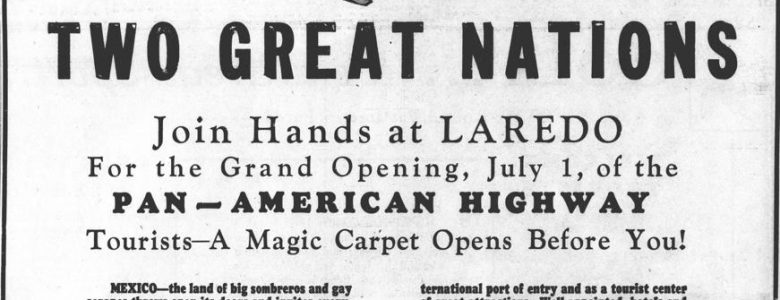This post was prepared by NDNP graduate student assistant Spencer Houghton, supported by Timothy Gieringer, Coordinator for the NDNP-Texas project. Spencer Houghton is a student at the University of North Texas pursuing a master’s degree in Archival Studies. He lives in Denton, TX with his wife Kaylia and two dogs Joey and Penny.
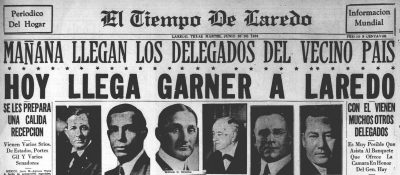 On the morning of Wednesday, July 1, 1936, US Vice President John Garner, Mexican Secretary of Foreign Relations General Eduardo Hay, and delegations that included ambassadors, diplomats, and cabinet secretaries from the US, Mexico, and Guatemala met on the international bridge in Laredo, Texas, to celebrate the opening of the Laredo-Mexico Highway. The highway, Mexico’s longest section of the larger Pan-American Highway, covers more than 700 miles of rough terrain, crossing deserts, winding through jungles, and scaling mountains, to connect Laredo to Mexico City.
On the morning of Wednesday, July 1, 1936, US Vice President John Garner, Mexican Secretary of Foreign Relations General Eduardo Hay, and delegations that included ambassadors, diplomats, and cabinet secretaries from the US, Mexico, and Guatemala met on the international bridge in Laredo, Texas, to celebrate the opening of the Laredo-Mexico Highway. The highway, Mexico’s longest section of the larger Pan-American Highway, covers more than 700 miles of rough terrain, crossing deserts, winding through jungles, and scaling mountains, to connect Laredo to Mexico City. 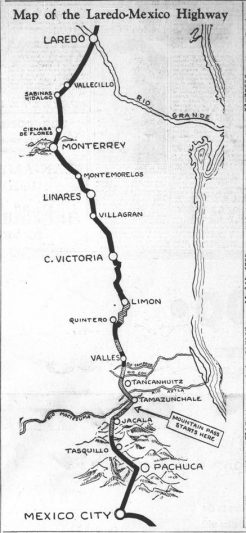
Though the highway would eventually cover just a small portion of the sprawling Pan-American highway, the road from Laredo to Mexico City would establish Laredo as America’s Gateway to Mexico. In the months leading up to the highway’s opening, both the US and Mexico opened new tourist bureaus on their respective side of the international divide. Jose Rivera, general manager of the influential Mexican Automobile Association, told The Laredo Times on June 6, 1936, “Laredo is a key point on our planned system for serving tourists on their way to and in Mexico.” It was estimated that in 1936, millions of American tourists were eagerly awaiting the highway’s opening.

In anticipation of the event, The Laredo Times published a 12-page special section in their June 30, 1936, issue, containing information relevant to the highway’s opening, with coverage in both English and Spanish.
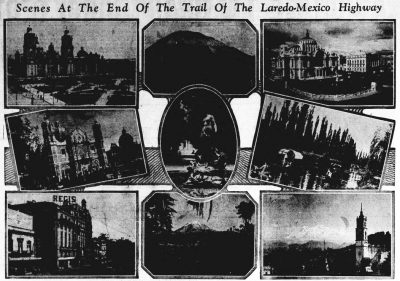
Features included a sightseeing guide for American tourists headed south to Mexico City, an article by Laredo native and engineer J.W. Berretta praising Mexican engineers for their accomplishments, and a call from Laredo Mayor Albert Martin mandating local businesses close during the opening ceremony to encourage would-be shoppers to attend the celebration. For more information on the Laredo-Mexico Highway, browse Chronicling America for additional issues of The Laredo Times.
As one of only four state institutions awarded seven times by the NEH, UNT has enjoyed a long history working with the National Digital Newspaper Program, and the opportunity to learn what other states do in newspaper preservation is something we look forward to every year. NDNP, “a partnership between the National Endowment for the Humanities (NEH) and the Library of Congress (LC), is a long-term effort to provide permanent access to a national digital resource of newspaper bibliographic information and historic newspapers, selected and digitized by NEH-funded institutions (awardees) from all U.S.” The collection NDNP has built on Chronicling America represents all 50 United States, Puerto Rico, and the U.S. Virgin Islands. Comprising over 20 million pages of news content, ChronAm is a rich, free resource for anyone interested in historical and genealogical research.
 |
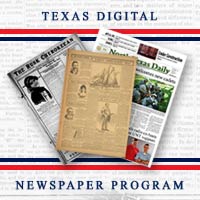 |
